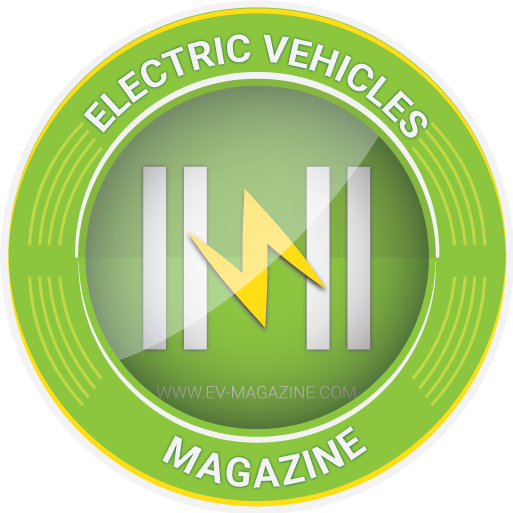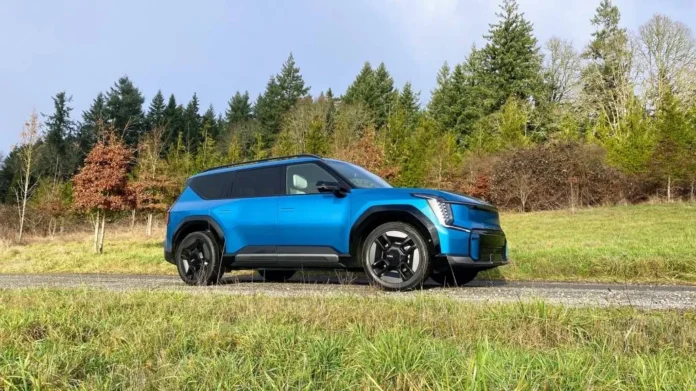When Ritu Narayan, CEO and co-founder of Zum, looks at the 74 electric school buses and chargers her startup has deployed at a former industrial site in East Oakland, California, she sees a future where clean transportation and a clean and reliable grid come together.
“Today marks the next phase in our evolution,” Narayan said at an event last week marking the official launch of the country’s first all-electric school-bus fleet. By financing and installing thousands of electric school buses for the Oakland Unified School District, and tapping their spare battery capacity to support the power grid, the San Francisco–based, transportation-as-a-service startup plans to “become a fully fledged energy company,” she said.
Zum already provides transportation services and technology for school districts across the country, including some of California’s largest districts, such as those serving San Francisco, Los Angeles, and San Bernardino. It hopes to electrify 10,000 school buses over the coming years, a move that will cut carbon emissions and reduce air pollution from diesel engines that harm students, drivers, and communities.
The 74 electric buses in Zum’s Oakland fleet, which serve the district’s special-needs students, will “eliminate 25,000 tons of harmful emissions, improving air quality and health outcomes for students and families,” Narayan said. Swapping out the roughly 500,000 diesel school buses in the U.S. for electric buses could slash an estimated 8.4 million tons of greenhouse gas emissions per year.
But electric school buses are two or three times more expensive than their diesel-fueled counterparts. Though federal, state, and utility incentives help school districts and transportation providers like Zum cover those costs, as of mid-2024 less than 2 percent of the total U.S. school-bus fleet has gone electric, up from just over 1 percent in mid-2023.
That’s where vehicle-to-grid (V2G) technology comes in. Electric school buses can charge with low-cost power and discharge spare capacity at times of grid stress, when power is both more expensive and more likely to be generated by fossil-fuel-fired power plants.
That’s good for the economics of electric school buses. And it’s also good for the grid, said Patti Poppe, CEO of Pacific Gas & Electric, the state’s biggest utility and owner of the grid that’s delivering 2.7 megawatts of power to the Zum site in Oakland.
“PG&E was able to step up to the challenge and deliver the energy to power these buses — and we were able to do it a year early,” Poppe said at last week’s event. That’s a quick turnaround for a utility that’s been criticized for not expanding its grid fast enough to serve its rapidly electrifying customers. In the case of the Oakland electric-bus depot, PG&E gets not only a big new customer but also a resource to provide relief “for the grid’s most constrained days,” she said.
Making electric school buses work as grid assets
A dream of EV enthusiasts for decades, vehicle-to-grid charging is something for which electric school buses are particularly well suited. Unlike cargo trucks or city buses, they operate only a few hours per day while picking up and dropping off students. That leaves plenty of time for them to plug in and soak up off-peak electricity in the middle of the day — including the surplus solar power that floods California’s grid when it’s sunny out — and discharge it in late afternoons and evenings, when California’s grid faces its most severe imbalance of supply and demand.
California’s roughly 25,000 school buses could provide more than a gigawatt of electricity if converted to battery power, according to the California Energy Commission. The agency has issued grants for hundreds of electric school buses, as well as ones to support school-bus V2G pilots involving charging companies such as Nuvve and Fermata Energy.
Electric school-bus V2G projects are popping up in other states as well. Highland Electric Fleets, a transportation-as-a-service startup that launched the country’s largest electric-school-bus contract in Montgomery County, Maryland, in 2021, implemented the first U.S. commercial-scale V2G project in Beverly, Massachusetts, in 2022. Nuvve is deploying V2G projects in Colorado, Illinois, and other states.
But Zum’s Oakland fleet represents a much larger grid resource than the smattering of electric school buses that have been equipped for V2G service to date. Each of the 74 buses, manufactured by Chinese EV giant BYD, has its own bidirectional charger, built by California-based manufacturer Tellus Power Green. Each bus can discharge up to 50 kilowatt-hours on a working day and up to 111 kilowatt-hours — 80 percent of the battery capacity — on a nonworking day.
It’s hard to predict how much money could be made by discharging power from plugged-in EVs, however. So far, most of the V2G projects in the country have been structured as pilots, rather than as commercial endeavors. The utility programs and energy market structures that could allow school districts and transportation providers to earn steady and predictable revenues from V2G remain in their early stages of development.
In California, V2G charging sites can access the Emergency Load Reduction Program, created by the California Public Utilities Commission in 2021 in response to the state’s summer grid emergencies. ELRP offers highly lucrative compensation of $2,000 per megawatt-hour for power users that can quickly reduce power demand or inject power. But it’s hard to build a business case around the complex process of signing up for a program that earns money only during occasional grid emergencies.
Zum and PG&E are developing plans that could bring more certainty to the V2G revenue proposition, however. “We’re working on a pilot dynamic rate that would reward them for charging when rates are low and discharging when rates are high,” Rudi Halbright, PG&E’s product manager of vehicle-grid-integration pilots and analysis, said at Tuesday’s event.

Source link by Canary Media
Author Jeff St. John
#countrys #biggest #electric #schoolbus #fleet #feed #grid






